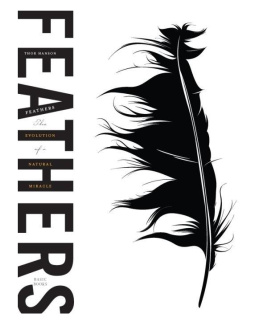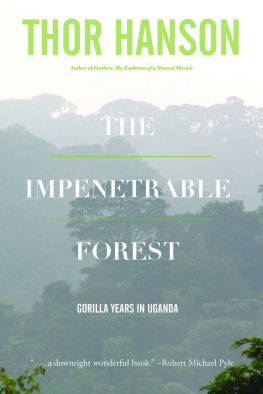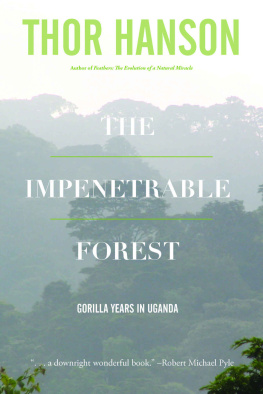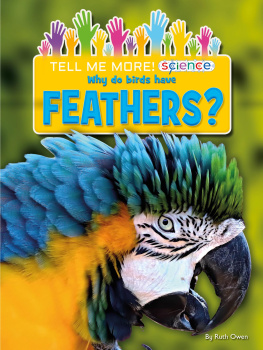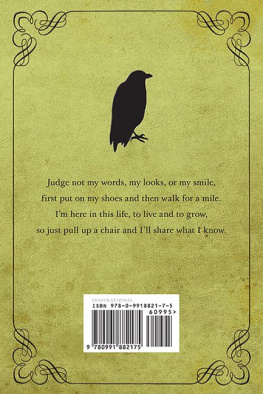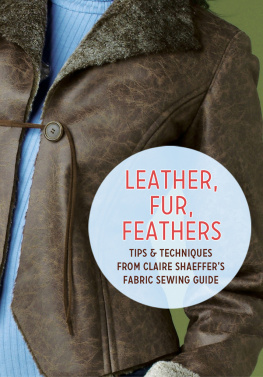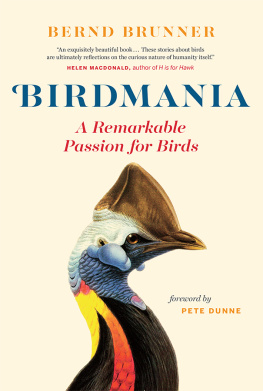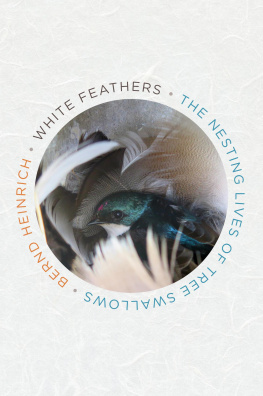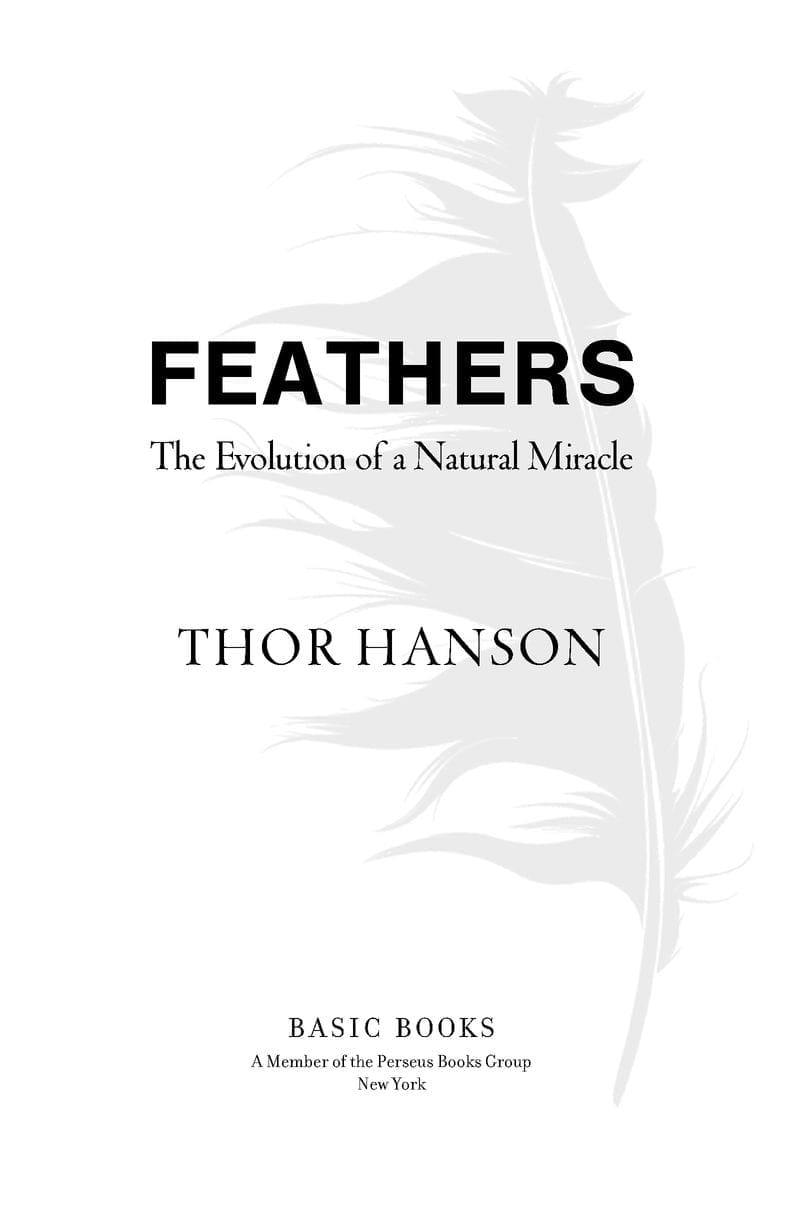Copyright 2011 by Thor Hanson
Published by Basic Books,
A Member of the Perseus Books Group
All rights reserved. No part of this book may be reproduced in any manner whatsoever without written permission except in the case of brief quotations embodied in critical articles and reviews. For information, address Basic Books, 387 Park Avenue South, New York, NY 10016-8810.
Books published by Basic Books are available at special discounts for bulk purchases in the United States by corporations, institutions, and other organizations. For more information, please contact the Special Markets Department at the Perseus Books Group, 2300 Chestnut Street, Suite 200, Philadelphia, PA 19103, or call (800) 810-4145, ext. 5000, or e-mail special.markets@perseusbooks.com.
Library of Congress Cataloging-in-Publication Data
Hanson, Thor.
Feathers : the evolution of a natural miracle / Thor Hanson.
p. cm.
Includes bibliographical references and index.
eISBN : 978-0-465-02346-2
QL697.4.H36 2011
598.147dc22 2011003272
Table of Contents
ALSO BY THOR HANSON
The Impenetrable Forest: My Gorilla Years in Uganda
For Eliza
Authors Note
Throughout this book, birds are referred to using English names standardized by the International Ornithological Union. By this convention, individual species are capitalized (e.g., Winter Wren, Lesser Bird of Paradise), while groups of birds or generic references are not (e.g., the wrens, the birds of paradise). The IOC species list is maintained online and updated regularly by an international panel of ornithologists (see Gill and Donsker 2010). It eliminates the need to clutter up the text with endless parenthetical Latin binomials. Ive similarly avoided in-text citations in favor of trailing phrase notes, which identify quotations and highlight important source material for each chapter. See the notes section, which begins on page 283. A complete list of references is included in the bibliography.
Acknowledgments
Writing a book of this kind relies on the generosity of others. From scientists and museum curators to fishing guides and fashion designers, people throughout the world of feathers have come to my aid time and againassisting with research, answering questions, sharing data and specimens, and sitting down for long feather-filled conversations. Here, in no particular order, are some of the people and organizations that have helped me along the way:
Bob Pyle, Hilda Boshoff, CP Nels Museum, Rob Nixon, Sarah Abrevaya Stein, Jodi Favazzo, Marios Ignadiou, Greg Willson, Scott Hartman, Xing Xu, Wyoming Dinosaur Center, Alan Feduccia, Richard Prum, Carla Dove, Pete Menefee, Rainbow Feather Company, Marian Kaminitz, Leah Chalfen, Simon Thomsett, Laila Bahaa-el-din, Anziske Kayster, Graaff-Reinet Museum, the family of Russel W. Thornton, Peter Liotta, National Audubon Society, Kathy Ballard, Kim Bostwick, Patrick Kirby, John Sullivan, Tony Scruton, Bernd Heinrich, Edward Bormashenko, Yan-chun (Daniel) Xu, Peter Harrison, Julian Vincent, Ken and Suzanne Franklin, Suzanne Stryk, Shirley Reuscher, Ken Dial, Ellen Thaler, Angela Linn, University of Alaska Museum of the North, Smithsonian Feather Identification Lab (National Museum of Natural History), National Museum of the American Indian, Pacific Coast Feather Company, Jeffrey Long, Travis Stier, Glenn Tattersall, Brenda Boerger, David Houston, Maureen Goldsmith, University of Pennsylvania Museum of Archaeology and Anthropology, Elana Kitching, Linda Lorzechowski, Glenn Roe, ARTFL Encyclopdie Project, Tom Whiting, Whiting Farms, David Roberts, Cliff Frith, Jane Grayer, Ian Strange, Donald Jackson, Chris Strachan, Robert Petty, Impington Village College Model Aeroplane Club, Peter Stettenheim, William T. Cooper, Robert Petty, Theiunus Piersma, Max Platzer, Gwen Bisseker, Nickolay Hristov, Airling Gunderson, and Petra Quillfeldt.
Special thanks are due to Paul and Ann Hanson and Erin Braybrook for some very timely child care. Im also deeply indebted to the entire staff of the San Juan Island Library, and particularly Heidi Lewis for her patience with my endless interlibrary loan requests.
Frank Gill kindly lent his expert eye to early drafts of the manuscript and provided valuable and encouraging feedback.
Im grateful to my agent, Laura Blake Peterson, for shepherding a field biologist through the world of publishing and for connecting me with T. J. Kelleher at Basic Books. T. J.s editorial savvy and enthusiasm for this project have been a boon. Whitney Casser, Cassie Nelson, Sandra Beris, Annette Wenda, and the rest of the team at Basic have also been a pleasure to work with.
Finally, none of this would have been possible without the unwavering support of my wife, Eliza Habegger. Along with our baby boy, Noah, and the rest of my family and friends, she patiently puts up with my quirks, queries, travels, and lengthy retreats to the Raccoon Shack.
Preface
O! I am Fortunes fool.
William Shakespeare,
Romeo and Juliet (ca. 1595)
Vultures made me do it. Thats my stock answer now, whenever people ask me about this book. It was vultures that first spurred my interest in feathers, years ago on a research project in Kenya. Watching the great birds hiss and squabble around a carcass, I thought of how perfectly their feathers (and lack thereof) were suited to the lifestyle. Bare heads and necks provided for cleaner feeding as well as heat regulation, stretched out long to keep cool during the day and tucked back into a plush, downy collar at night. Their dark body plumage resisted bacteria and absorbed the hot African sun, helping them stay warm in the chilly high altitudes where they soared, searching for the next kill.
The vultures started me thinking about feathers, and Ive never stopped. Ive seen flycatchers and nightjars burdened with breeding plumes three times their body length and watched penguins plunge beneath ice floes, comfortably watertight inside their satiny coats. Ive huddled in a goose-down sleeping bag on subzero nights, while the tiny kinglets I studied kept perfectly warm nearby, fluffed up against the icy winter wind. Ive traced feather shapes in the stone of dinosaur fossils and seen them in flying machines, fishing lures, Victorian hats, shuttlecocks, fletching, and ancient Peruvian artwork. As ornithologist Frank Gill observed in his classic textbook, Ornithology, The details of feathers have fascinated biologists for centuries; it is an enormous topic. Perfect for a book, Id often thought, but it would take another vulture to set me on the path.
Let me explain. As a field biologist, Im never at a loss for things to study or topics to write about: everything in the natural world is fair game. If Im not intrigued and excited every time I step outside, it just means Im not paying attention. Some people find it excruciating to go for a hike with me and my constant distractions: bird nests, butterflies, lichens, ant hills, soil types, bug frass, rocksyou name it. At home, my wife, Eliza, puts up with dead voles and songbirds tucked into the freezer; plant specimens filling the fridge; boxes of unidentified bees, old bones, and owl heads; and a big tank full of interesting grubs. (Our baby, Noah, puts up with a lot, too, but hes never known anything different!) Im a fundamentally curious person, and its never hard finding subjects of interest; the challenge lies in narrowing them down.

